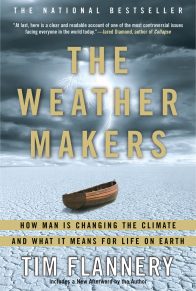Milt Miller was awake by five. Like the whalers and fishermen in his family before him, he’d always been an early riser. He’d started fishing, he liked to say around Montauk, as soon as he could walk. Now that fishing was good, he often stayed on board the boat overnight to make the most of each day. His wife of three years was used to that, and he was making over two hundred dollars a month, which made it easier. When he came up on deck of the 110 foot dragger, the dawn sky was hazy but unremarkable. The sea was flat calm. There had been stars in a clear sky the night before when he turned in after he and the rest of the five-man crew had iced and shipped a boatload of cod and porgies west to New York City. Fish was bringing in ten cents a pound. Life, for a twenty-five-year-old man conditioned by the Depression, was pretty good.
But as he moved slowly into the day, preparing to take the boat out and pick up a net they’d left the night before on Gardiners Island, an eighty-year-old fisherman on the dock called out, “If you’re going to go, you’d better get over there and get back. I’ve never seen the barometer so low.” Milt took note. He knew the old-timer had what fishermen called a “weather eye,” a squint that could tell what the weather was going to be better than any other kind of forecast.
Montauk Point, at the end of Long Island, thrusts east toward the dawn while the rest of America is still in darkness. To the northwest lay Long Island Sound, and just over the horizon were the sleeping coasts of Connecticut and Rhode Island. East toward the sun was the Atlantic. Tidal waters swirled around the point, into the sound, and back again, carrying schools of bait and the larger fish that fed on it. There was money to be pulled from the gray waters off Montauk.
Milt pulled away from the dock at the Promised Land fish factory and eased the boat across mirror-flat waters toward the sound. It had been nearly 2:00 A.M. when he finally moored the boat and went to sleep the night before, but he was a vigorous, chunky young man and could get by on a few hours’ sleep when the fishing was good. He loved to fish.
When the fishing boats set out to sea at the start of the day, Milt felt exhilarated. He watched the Ocean View, a bunker steamer that belonged to the Smith Meal Company, the biggest fish factory in Montauk, set out with the other boats. Its crew fished for menhaden, the small, bony fish used in making soap and fertilizer.
Also heading out the harbor, going toward the point, was a trawler from Fort Pond Bay dock. He knew it was Capt. Dan Grimshaw’s boat and that his friend, Stevie Dellapolla, was on board. Dellapolla, eighteen, was busily squaring away the deck, but he waved when he saw Milt. He felt good when he saw Milt Miller. Everyone knew Milt, who had been fishing since his early teens, longer than any of the other young men. Stevie also much admired his brother-in-law, Andrew Samb, a fisherman who had gone out on a bunker boat, the Robert E., that morning. Stevie was proud to be working as a fisherman.
Dan Grimshaw was known as an able captain. Navigational equipment was minimal and consisted of a compass, a radio, and a direction finder only, so the captain’s skill and knowledge of weather and sea conditions and handling the boat were every bit as important as the vessel’s seaworthiness. Stevie felt in good hands with him. He had spent a lot of time on the boat that fall, because its trips alternated between commercial dragging and party-fishing, and so far they had been party-fishing three days a week when the passenger train brought out clients.
Often, when the train didn’t bring anyone, they went swordfishing. That was a very specialized technique. First, a crewman standing in the bow would harpoon the swordfish, which had a habit of basking on the surface. Then two men would pick up a small barrel on the bow and throw it overboard. Inside the barrel was six hundred feet of line tied to the harpoon. When the fish took off, the barrel bobbed along behind and marked where the fish was going. It was a smaller version of a similar method used for whaling in these waters a hundred years before. Stevie was learning a lot, and also earning $2.50 a trip. On this morning, as Milt’s boat moved away toward the northwest and Gardiners Island, Stevie noticed that Dan Grimshaw was staring intently at the horizon.
Grimshaw had noticed the sudden drop in the barometer that signals the approach of high winds and bad weather. Like a giant vacuum cleaner, the low pressure in the eye of the storm was already drawing the air south. He listened to the radio, but there was no advisory. Halfway out to the fishing grounds, when the barometer neared 29 inches, he turned back. He wanted to reach a good mooring before whatever was coming hit. After they’d turned, Stevie watched the forty-foot lobster boats go by, continuing out to the ocean. The crews were busy with the excitement in anticipation of a storm, and working to secure their gear and lines. Still, a few of the men paused to wave at Stevie. Stevie caught the eye of some of the crewmen. Later, he thought he had seen a manic gleam in their eyes. He had a sense of foreboding, and thought they did, too. Something just told him, he said later, that they were waving good-bye.















